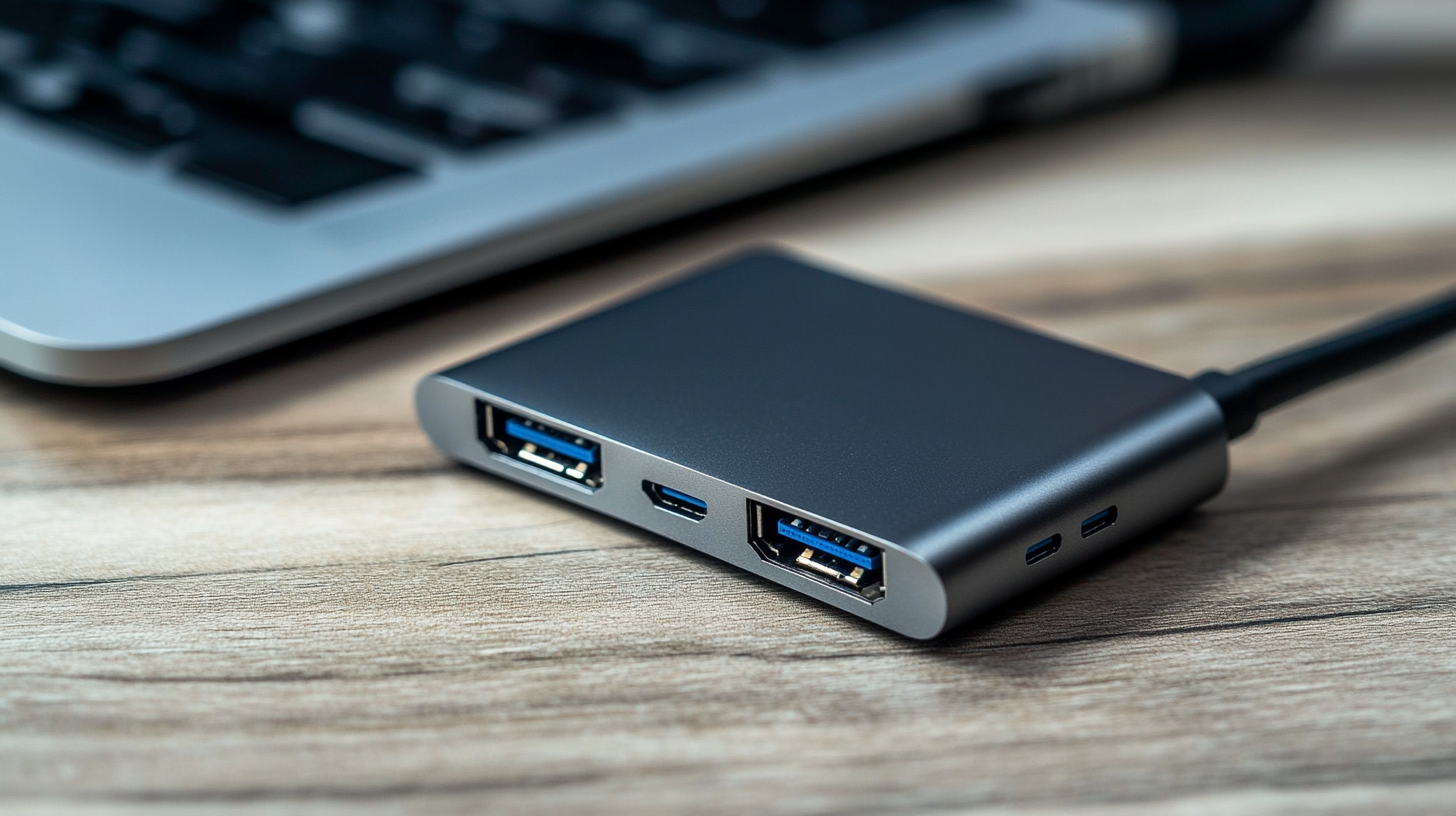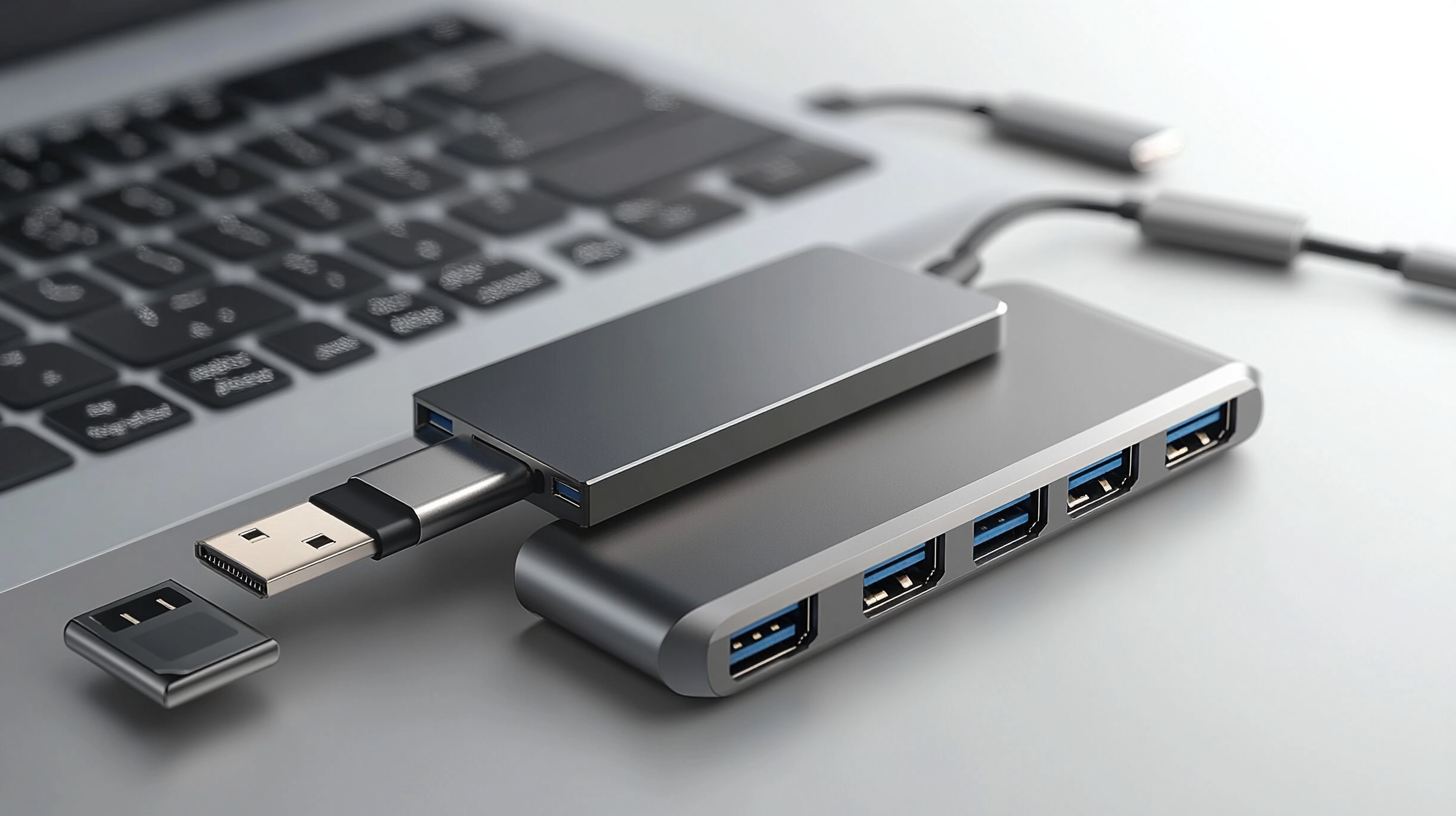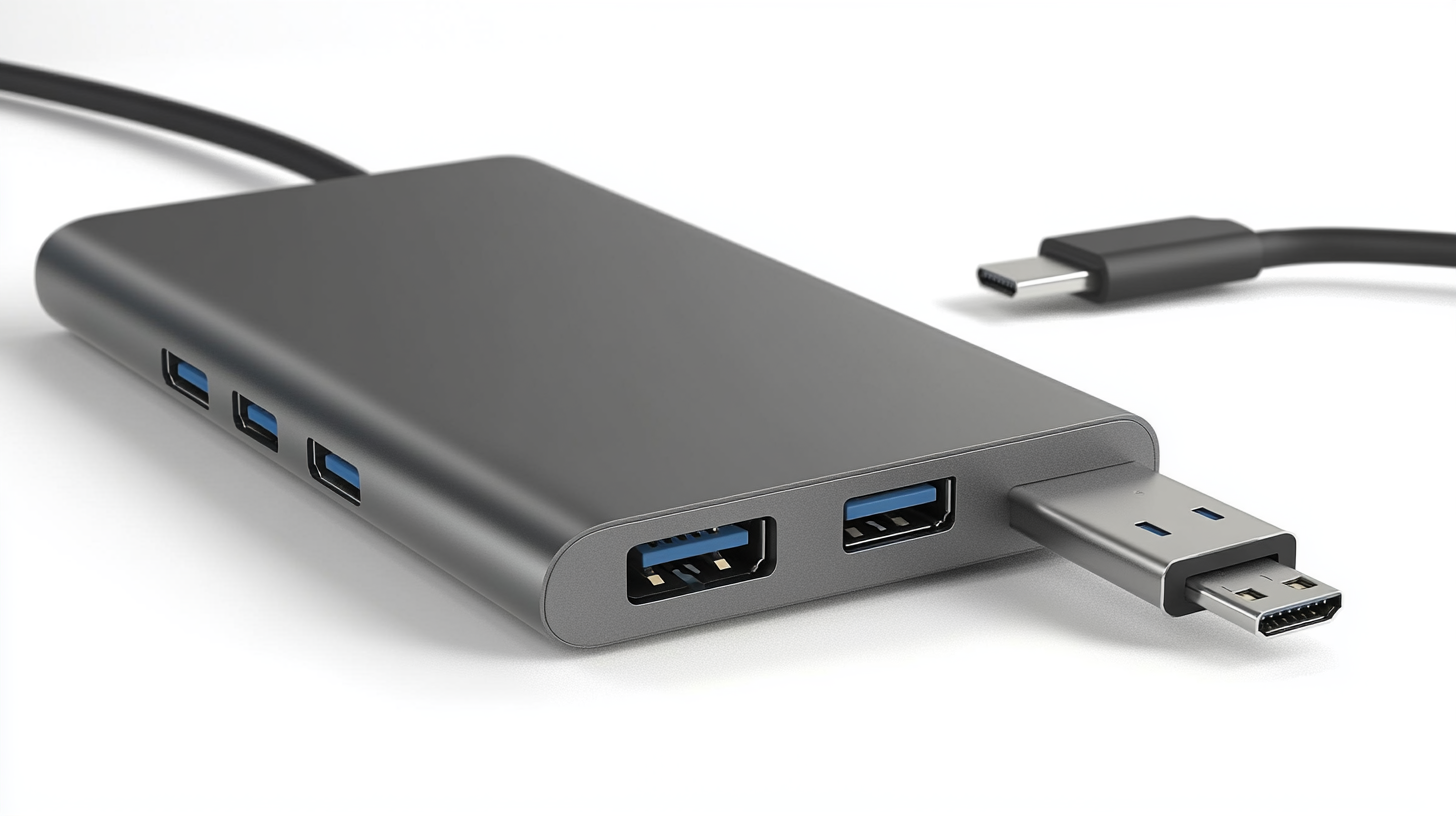
-
Home
-
Products
-
About Us
-
OEM&ODM
-
News
-
Contact Us
Inquiry
Form loading...

In the rapidly evolving landscape of technology, the need for seamless connectivity solutions is more pressing than ever. As we approach 2025, the market is witnessing an exciting revolution, particularly with the emergence of advanced USB Type C to Display Port adapters. These adapters are not merely accessories; they are essential tools that enable users to bridge the gap between devices with differing ports, ensuring high-quality video output and enhanced productivity. With China continuing to establish itself as a powerhouse in manufacturing and exporting innovative tech products globally, the production of USB Type C to Display Port adapters reflects both modern design and practicality. This blog will delve into the transformative trends driving this industry forward, highlighting the role of powerful factories in China that cater to a worldwide demand for quality electronic components, and how these changes will shape our daily tech interactions in the coming years.

The emergence of USB Type-C is reshaping the landscape of display connectivity, paving the way for versatile and high-performance connections in various devices. As a universal interface, it supports not only data transfer but also video output and charging capabilities. This multifunctionality positions USB Type-C as a game changer for users seeking streamlined solutions for their digital setups.
With Microsoft's recent WHCP policy mandating all USB Type-C ports to support multifunctional capabilities, users can now expect a more consistent and reliable experience across devices. This ensures that as technology evolves, our connections can adapt seamlessly, reducing the frustration of incompatibility that has plagued previous interfaces.
**Tip:** When choosing a USB Type-C to DisplayPort adapter, look for those that guarantee high bandwidth support, ideally up to 8K resolution, to future-proof your investment.
**Tip:** Always check for compatibility with your devices. Not all USB Type-C ports support video output, so verify specifications to avoid any connectivity issues before purchasing adapters.
| Feature | Description | Expected Growth Rate (2023-2025) | Market Share (%) |
|---|---|---|---|
| 4K Support | Enables high-resolution video output | 30% | 45% |
| Bidirectional Transmission | Flexible data and video signal transmission | 25% | 30% |
| Compact Design | Easily portable and space-saving | 15% | 20% |
| Compatibility | Works with multiple devices including laptops and tablets | 20% | 60% |
| Power Delivery | Simultaneous charging while using the adapter | 10% | 35% |
DisplayPort technology has become a pivotal standard in facilitating high-quality video and audio transmission, particularly with the rise of USB Type-C connectors. One of the key features of DisplayPort is its ability to support resolutions up to 8K at 60Hz, making it a prime choice for gamers and professionals seeking crystal-clear visuals. According to a recent report by the International Association of Consumer Electronics Manufacturers (IACE), over 52% of high-end monitors now utilize DisplayPort connections, showcasing its growing prevalence in the industry.
Moreover, DisplayPort's adaptive sync technology significantly enhances the gaming experience by minimizing screen tearing and providing smoother performance. As a result, this technology is instrumental for creators in fields such as video editing and graphic design, where precision and detail are paramount. A survey by Tech Knowledge indicated that 78% of content creators prefer devices equipped with DisplayPort for their workflow efficiency.
Tip: When choosing a USB Type-C to DisplayPort adapter, ensure it supports the latest version of DisplayPort to take advantage of higher bandwidth and advanced features.
Additionally, consider adapters with multi-stream transport (MST) capabilities, which allow multiple monitors to connect using a single DisplayPort output, enhancing your workspace flexibility. Investing in high-quality adapters not only future-proofs your setup but also guarantees you can enjoy optimal performance across all your devices.
When setting up your modern workstation, choosing the right connectivity option is crucial. USB Type-C and HDMI are two popular interfaces that cater to different needs. USB Type-C, with its reversible design and versatility, supports a range of functionalities including power delivery, data transfer, and video output. Its capability to deliver high-resolution video makes it an attractive choice for users who want to streamline their connections with a single cable. This is particularly beneficial for laptops and mobile devices that prioritize portability.
On the other hand, HDMI is the established standard for audio and video transmission, particularly in home entertainment systems. It excels in delivering high-definition content to TVs and monitors, making it a go-to for gaming and multimedia purposes. While HDMI is widely used and supported in various devices, it lacks the multifunctionality that USB Type-C offers. Ultimately, the choice between USB Type-C and HDMI depends on your specific setup and requirements. If you're looking for a multi-use option to minimize cable clutter, USB Type-C may be the better fit; however, for dedicated audio-visual setups, HDMI could be your best bet.

As we step into 2025, the demand for high-performance USB Type-C to DisplayPort adapters continues to rise, driven by the evolving landscape of connectivity options in modern devices. With the trend towards high-resolution displays and seamless multitasking, selecting the right adapter can make a significant difference in your computing experience. When it comes to performance, the best USB Type-C to DisplayPort adapters stand out for their ability to support 4K and even 8K resolutions, ensuring vibrant visuals and smooth refresh rates for demanding applications.
Among the top contenders in this space, features such as robust build quality, data transfer speeds, and additional ports for peripherals can enhance functionality. Multi-port adapters not only facilitate video output but also offer connectivity options for keyboards, mice, and external drives, streamlining your desktop setup. Whether you are a professional seeking reliable performance for presentations or a gamer looking to elevate your gaming experience, investing in a high-quality USB Type-C to DisplayPort adapter is essential for harnessing the full potential of your devices in 2025.
 As we look towards the future of connectivity, USB Type-C to DisplayPort technology is poised for transformative innovations that will redefine how we interface with our devices. This evolution is driven by the rising demand for high-resolution displays and seamless multi-screen setups. With advancements in bandwidth capabilities and support for higher refresh rates, we can expect adapters that not only support 4K and 8K resolutions but also ensure minimal latency and higher frame rates, making them ideal for gamers and professionals alike.
As we look towards the future of connectivity, USB Type-C to DisplayPort technology is poised for transformative innovations that will redefine how we interface with our devices. This evolution is driven by the rising demand for high-resolution displays and seamless multi-screen setups. With advancements in bandwidth capabilities and support for higher refresh rates, we can expect adapters that not only support 4K and 8K resolutions but also ensure minimal latency and higher frame rates, making them ideal for gamers and professionals alike.
In addition to enhanced performance, future USB Type-C to DisplayPort adapters are likely to incorporate smart technology features. This could include automatic resolution adjustments based on the connected display capabilities and power delivery options that enable charging devices simultaneously. Moreover, as more devices embrace USB-C as a universal standard, compatibility and user experience will be paramount, leading to innovations in design that allow for more compact, durable, and efficient connectors. As we step into 2025, the potential for USB Type-C to DisplayPort technology seems limitless, paving the way for richer and more versatile user experiences.